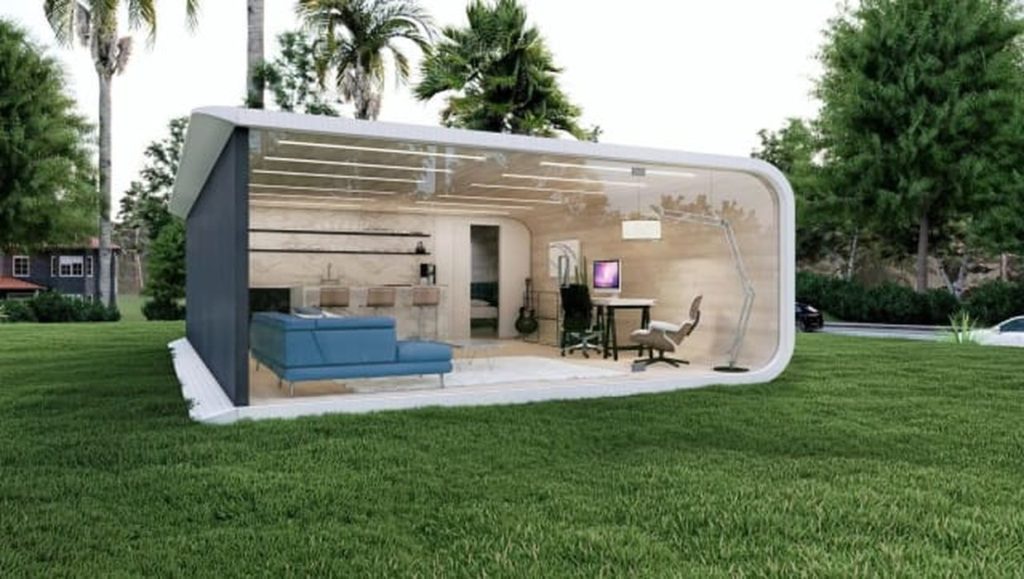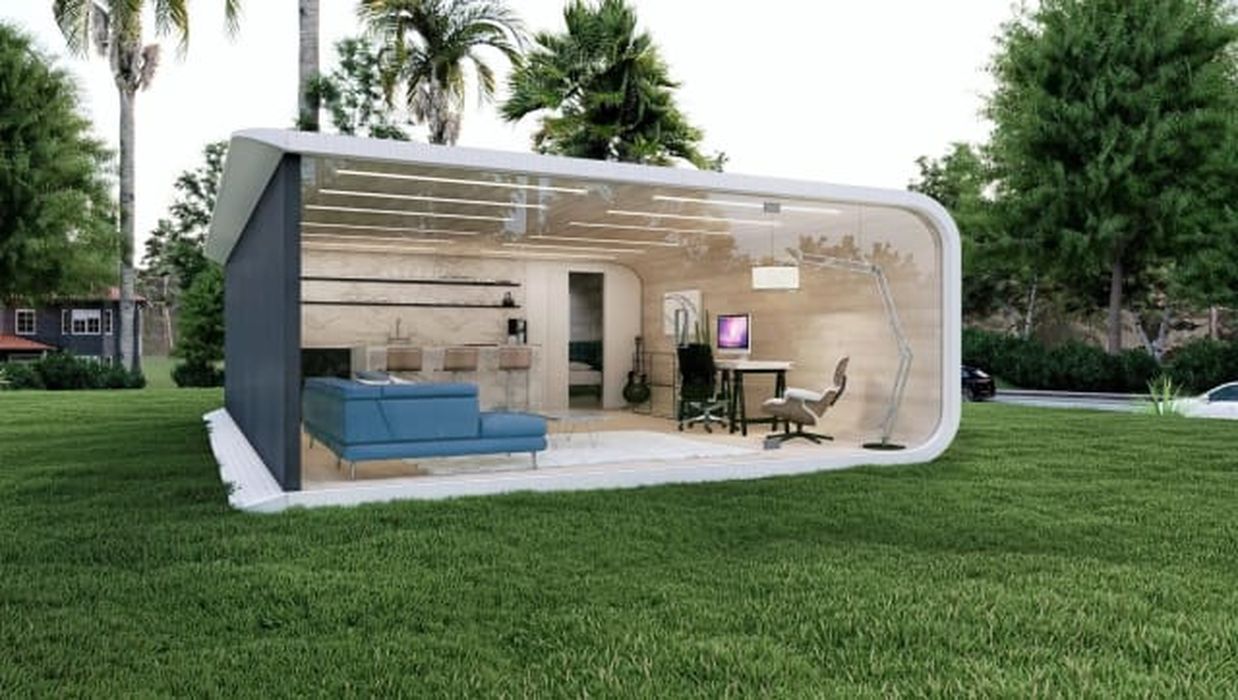
Azure Printed Homes will use plastics destined for landfill to print affordable living structures instead.
As 3D printed houses are becoming more and more common, engineers are already looking to innovate the way the technology is used in the construction industry. Azure Printed Homes, based in California, has developed an innovative and environmentally friendly way to print homes: it claims to be the first company to repurpose plastic waste and use it as a primary home building material.
In fact, more than 60 percent of Azure’s print material is made with a recycled plastic polymer that is often used in water bottles and food packaging—and which is often destined for landfill or incineration.
Customers can design and customize their structures, including colors, finishes and other details, through the 3D configurator on Azure’s website. Once the design is finalized, Azure then 3D prints the unit—a process that takes less than 24 hours. The components are assembled and shipped to the customer, and then installed on-site.
The construction sector generally relies on the same building techniques that have been in use for decades, which can often lead to delays, ballooning costs, and a whole lot of wasted materials. In contrast, Azure claims that its technology enables the company to prefabricate buildings 70 percent faster —and 20 to 30 percent cheaper—than conventional methods.
“The construction sector is the largest global consumer of raw materials, responsible for approximately 20 percent of the world’s total carbon emissions,” said Gene Eidelman, cofounder of Azure Printed Homes. “Our responsibility to our customers and to future generations is to use the most sustainable practices imaginable.”
Azure’s printing process.
The company recently announced the opening of a new 3D printing facility—a 15,000-square-foot factory that will house Azure’s custom-built 3D printer that will fabricate the company’s line of products.
Those products include an Accessory Dwelling Unit (ADU), a structure that can range from 450 to 1,000 square meters. That’s big enough to serve as an extra room for an existing house, a guest house or an income unit. The starting price is $99,900.
The company also offers a smaller, 120-square-foot backyard studio, a free-standing structure that can function like a home office, gym, artist space or entertainment room. The base price for this unit is $23,900.
Read more at ENGINEERING.com


My project includes making large boats/barges from recycled HDPE around structural reinforcing. Is this possible with extrusion technology yet? Can polyethelene be re reused or is there degradation in multiple uses?